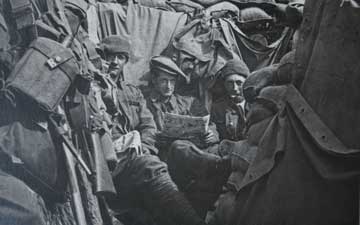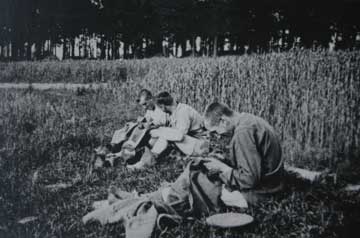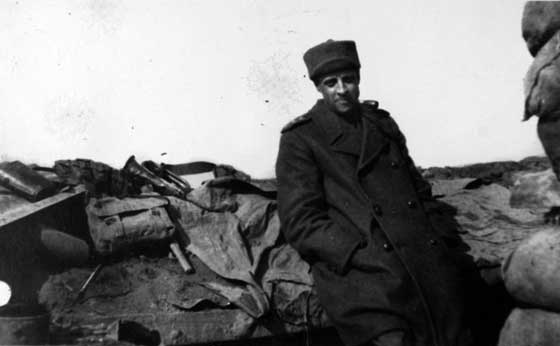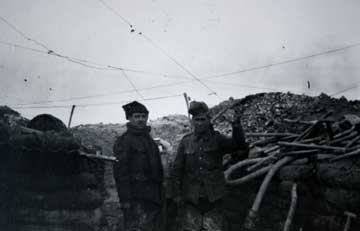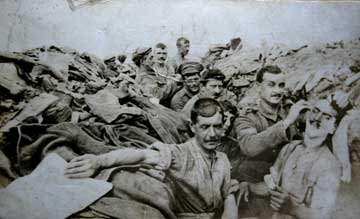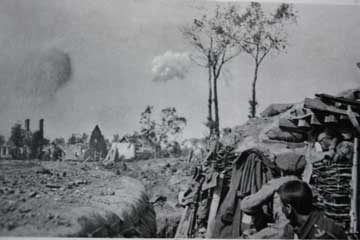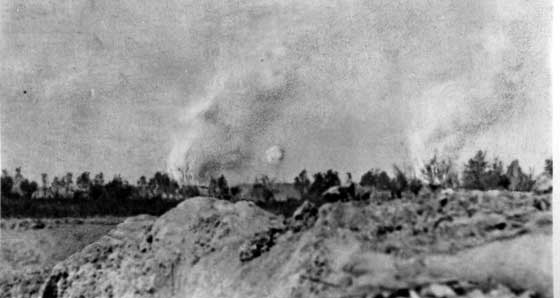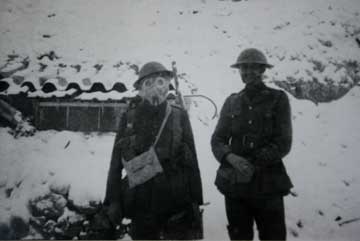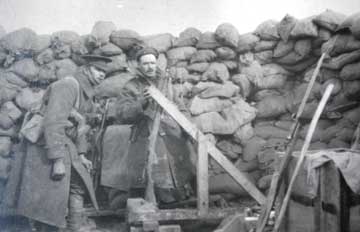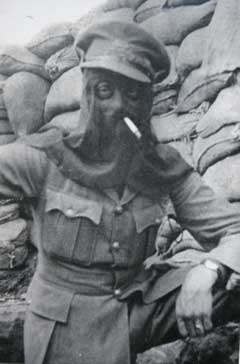 |
King's Own Royal Regiment Museum Lancaster |
|
|
HOME Museum & Collections Sales Donations Events Contact Us REGIMENTAL HISTORY 17th Century 18th Century 19th Century 20th Century First World War Second World War Actions & Movements Battle Honours FAMILY HISTORY Resources Further Reading PHOTO GALLERY ENQUIRIES FURTHER READING LINKS
© Images are copyright, Trustees of the King's Own Royal Regiment Museum. |
Museum Display Information The Great War 1914-1918 Trench Warfare
The usual precaution against ‘trench foot’ (caused by long immersion of the feet in water and mud) was to rub from above the knee to the foot with whale oil. Sometimes boots had to be cut off to expose black and rotting feat. Few trenches had adequate drainage. Some did not even have duck boarding to walk on. ‘Trench fever’ was traced to infection by the bites of lice, it was not serious, but meant a man had to be withdrawn from the front.
There was little thought given to hygiene and sanitation. Often men killed were buried just behind the trench.
There were no toilets. Some trenches, especially in the early days, lacked communication trenches to the rear and all movements in the ‘fire zone’ had to be undertaken by cover of darkness. Sometimes ration parties did not get to the front and troops had to go without food and water for more than twenty four hours. Many men suffered frost bite in the winter. Rifles and machine guns became caked in mud. Everything got bogged down.
Shelling brought down telephone wires and communications became difficult. In ‘the fog of war’ it was difficult to know what was going on - and sometimes difficult to know who was in command.
Life in the trenches was worse for the men of 2nd Battalion. They had no time to acclimatise from the Indian heat to the January cold of the Western Front. Under cover of darkness when there was some distance between the opposing lines a party under a NCO would crawl out into no man’s land to listen for sign of enemy movement. Each moment seemed an eternity - men lay motionless whilst rats crawled over them, and owls flitted around the shattered and blackened limbs of the few trees. An occasional shell would drop nearby and men would be buried alive and have to be dug out.
By day soldiers there was very little to do. When not on sentry duty many would snatch a little sleep. Others would get a hair cut or shaved.
Boredom was a big problem. Never far away was the roar of shells, and the ‘fut-fut’ of the machine guns.
The next evening would bring plenty work - sand bags and barbed wire damaged by shelling would have to be replaced. Each sand bag took three men to fill it - one to hold it open, one to shovel, and one to scrape the mud off the shovel.
Horns and gongs were sounded to warn of a gas attack. Blankets, soaked with chemicals, covered the entrances to dug outs to stop the drifting gas clouds from entering.
Snipers
Snipers were used by both sides - they shot at any man who moved. They were always on the look out for officers - insignia on the sleeves and shoulders gave their rank. The mask was to protect his face and to give him maximum camouflage from German snipers. A marked difference by the winter of 1917 was that the Germans no
longer had so great an advantage in their snipers. The issue of
telescopic lenses and the establishment of army schools of sniping under
the direction of big game hunters had done much to restore the balance. Machine Guns Each battalion had two machine guns at the start of the war, this was quickly doubled to four. By 1915 this had increased to eight. From October 1915 machine gunners, and their Vickers guns, were transferred from the infantry to the newly formed Machine Gun Corps. The machine gun was very much an offensive weapon - it could put down a barrage of fire through which advance was not possible.
© Images are copyright, Trustees of the King's Own Royal Regiment Museum. Only a proportion of our collections are on display at anyone time. Certain items are on loan for display in other institutions. An appointment is required to consult any of our collections which are held in store. |

